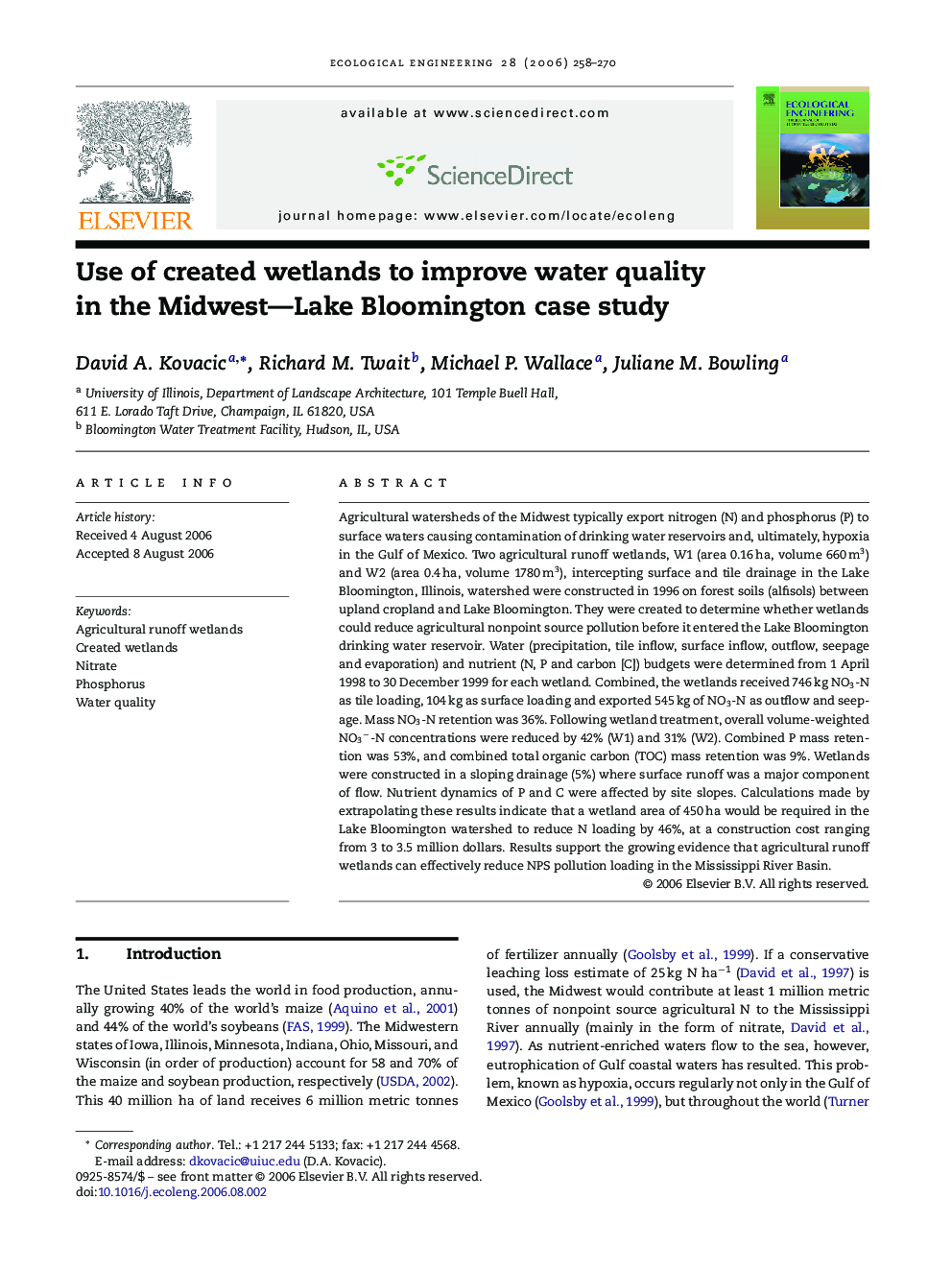| کد مقاله | کد نشریه | سال انتشار | مقاله انگلیسی | نسخه تمام متن |
|---|---|---|---|---|
| 4391160 | 1305215 | 2006 | 13 صفحه PDF | دانلود رایگان |
عنوان انگلیسی مقاله ISI
Use of created wetlands to improve water quality in the Midwest-Lake Bloomington case study
دانلود مقاله + سفارش ترجمه
دانلود مقاله ISI انگلیسی
رایگان برای ایرانیان
کلمات کلیدی
موضوعات مرتبط
علوم زیستی و بیوفناوری
علوم کشاورزی و بیولوژیک
بوم شناسی، تکامل، رفتار و سامانه شناسی
پیش نمایش صفحه اول مقاله

چکیده انگلیسی
Agricultural watersheds of the Midwest typically export nitrogen (N) and phosphorus (P) to surface waters causing contamination of drinking water reservoirs and, ultimately, hypoxia in the Gulf of Mexico. Two agricultural runoff wetlands, W1 (area 0.16Â ha, volume 660Â m3) and W2 (area 0.4Â ha, volume 1780Â m3), intercepting surface and tile drainage in the Lake Bloomington, Illinois, watershed were constructed in 1996 on forest soils (alfisols) between upland cropland and Lake Bloomington. They were created to determine whether wetlands could reduce agricultural nonpoint source pollution before it entered the Lake Bloomington drinking water reservoir. Water (precipitation, tile inflow, surface inflow, outflow, seepage and evaporation) and nutrient (N, P and carbon [C]) budgets were determined from 1 April 1998 to 30 December 1999 for each wetland. Combined, the wetlands received 746Â kg NO3-N as tile loading, 104Â kg as surface loading and exported 545Â kg of NO3-N as outflow and seepage. Mass NO3-N retention was 36%. Following wetland treatment, overall volume-weighted NO3â-N concentrations were reduced by 42% (W1) and 31% (W2). Combined P mass retention was 53%, and combined total organic carbon (TOC) mass retention was 9%. Wetlands were constructed in a sloping drainage (5%) where surface runoff was a major component of flow. Nutrient dynamics of P and C were affected by site slopes. Calculations made by extrapolating these results indicate that a wetland area of 450Â ha would be required in the Lake Bloomington watershed to reduce N loading by 46%, at a construction cost ranging from 3 to 3.5 million dollars. Results support the growing evidence that agricultural runoff wetlands can effectively reduce NPS pollution loading in the Mississippi River Basin.
ناشر
Database: Elsevier - ScienceDirect (ساینس دایرکت)
Journal: Ecological Engineering - Volume 28, Issue 3, 1 December 2006, Pages 258-270
Journal: Ecological Engineering - Volume 28, Issue 3, 1 December 2006, Pages 258-270
نویسندگان
David A. Kovacic, Richard M. Twait, Michael P. Wallace, Juliane M. Bowling,